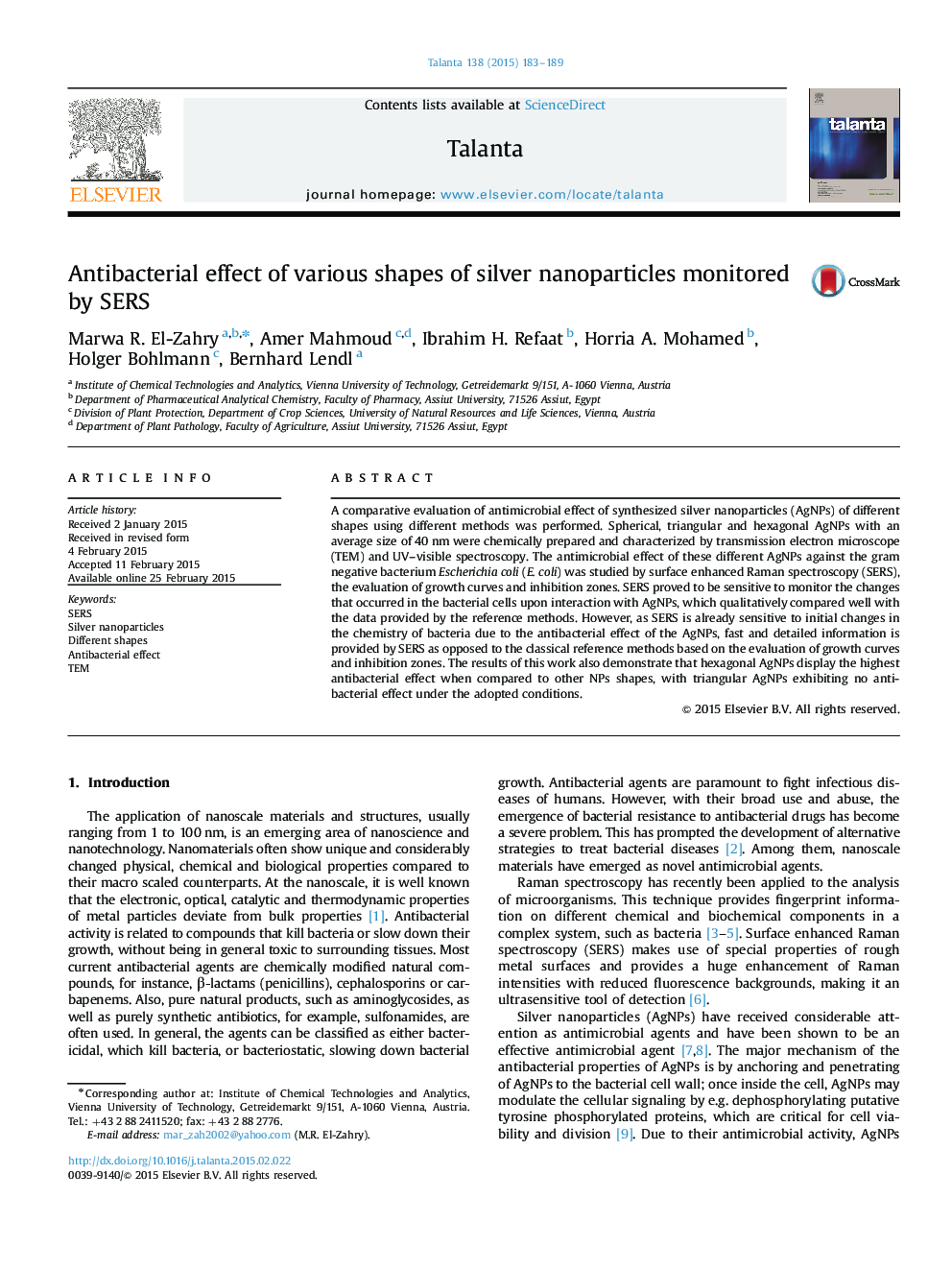| Article ID | Journal | Published Year | Pages | File Type |
|---|---|---|---|---|
| 1243348 | Talanta | 2015 | 7 Pages |
•In-situ, fast and sensitive study of the antibacterial effect of AgNPs.•Three shapes of AgNPs were prepared and their effect on E. coli has been studied.•Hexagonal AgNPs were found to be the most toxic to E. coli.•SEM, TEM and UV–visible spectroscopy were applied for AgNPs characterization.•SERS spectra of model compounds related to the bacterial metabolism were monitored.
A comparative evaluation of antimicrobial effect of synthesized silver nanoparticles (AgNPs) of different shapes using different methods was performed. Spherical, triangular and hexagonal AgNPs with an average size of 40 nm were chemically prepared and characterized by transmission electron microscope (TEM) and UV–visible spectroscopy. The antimicrobial effect of these different AgNPs against the gram negative bacterium Escherichia coli (E. coli) was studied by surface enhanced Raman spectroscopy (SERS), the evaluation of growth curves and inhibition zones. SERS proved to be sensitive to monitor the changes that occurred in the bacterial cells upon interaction with AgNPs, which qualitatively compared well with the data provided by the reference methods. However, as SERS is already sensitive to initial changes in the chemistry of bacteria due to the antibacterial effect of the AgNPs, fast and detailed information is provided by SERS as opposed to the classical reference methods based on the evaluation of growth curves and inhibition zones. The results of this work also demonstrate that hexagonal AgNPs display the highest antibacterial effect when compared to other NPs shapes, with triangular AgNPs exhibiting no antibacterial effect under the adopted conditions.
Graphical abstractFigure optionsDownload full-size imageDownload as PowerPoint slide
